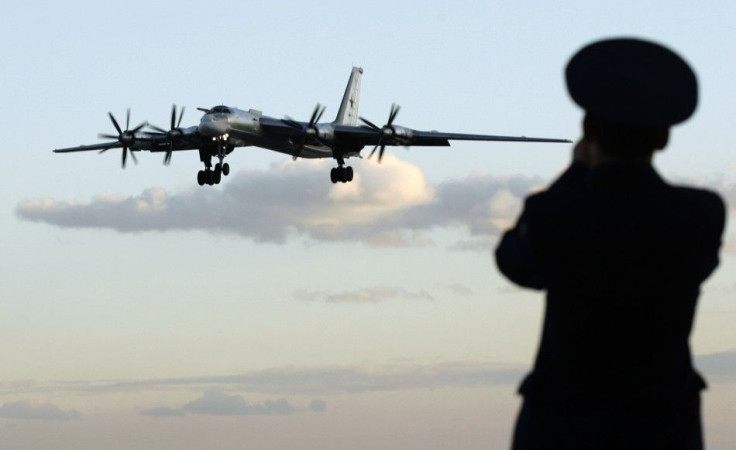Chinese Military Bomber Aircraft Fly Menacingly Near Japan Islands; Analysts Say Guam Base Can Be Under Threat

An incident involving a slew of Chinese military aircraft, including bombers, trying to transgress Japan's air space has been reported. The incident happened on Dec 6 and it is said that the aircraft were capable of posing a threat to Guam military base of the U.S. army. The Chinese provocation was in the area between Japan's Okinawa's island and Miyako island. The incident came up amidst some recent warmth in China-Japan relations after the APEC summit in Beijing.
Air Naval Combat Exercise
Chinese military commentator Li Xiaojian said the jets were heading to the Western Pacific to take part in a big naval and air combat exercise, in which Chinese naval ships also participated. The show was an assertion by China that it has the joint combat capability for conjoining naval and air power.
A senior official of the Japan's defense ministry explained that the incident involved a Chinese Y9 intelligence gathering plane, two Y8, early warning planes and two H6 bombers. They flew southwards over the East China and headed towards the vicinity of the main island of Okinawa before entering the Western Pacific ocean.
Thereafter they flew back over East China Sea. In response, several Japanese Self-Defense Force planes also scrambled to take flight in response, reported Want China Times. But Japan said the Chinese military aircraft did not violate their airspace. This is the first incident after 9 months that Chinese military aircraft made a return flight through the area between East China Sea and the Pacific through Okinawa's main island and Miyako island. Also this was the first time since October Japan tried to respond.
Lethal Armoury
According to Chinese expert Li, the Y-9 aircraft carries advanced electronic reconnaissance system to detect and intercept air and sea targets. For China, Y-8 aircraft is an important military and civilian transport aircraft capable of carrying troops, dropping supplies, conducting parachute drops, and functioning as an air ambulance. The Y-6 and water surface ships are platforms for the launch of attack missiles.
A military analyst, evalauting the pictures of the military exercise, said the H-6 is equipped with cruise missiles with the capability to launch air attacks. The H-6 is designed to carry a payload of 9,000 kilograms, including air-to-surface and air-to-ship missiles and free-falling bombs. Given its lethal power, the Chinese H-6 bombers can pose a serious threat to the U.S. carrier fleet and land bases in the South China Sea, East China Sea, Korean peninsula, and also important U.S military bases in Japan and Guam, said the analyst. Guam is a self-governing United States territory near Japan, where more than 25,000 military personnel are stationed, which is one-fourth of that island's population.
Nuclear Bomber
China's H-6K nuclear-capable bomber is more lethal. It is an upgraded version of the H-6 bomber, developed as an indigenous version of the Russian Tupolev Tu-16 Badger that was popular in Russia in the 1950s. China received a TU-16 bomber from the Soviet Union in 1958 and had been modifying it ever since. The Chinese media described the H-6K as a "medium-sized craft designed for long-range attacks, stand-off attacks and large-area air patrol". Unlike its predecessor, the H-6K has cruise missiles fitted under its wings. It also manoeuvers smartly than the H-6 and needs only a smaller crew to operate, reported Diplomat.






